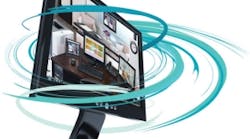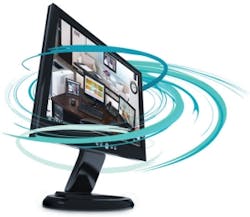(but it is laser physics)
by Heidi Christopher, RDH, and Peggy R. Blackburn, RDH
Historically, dental lasers have been expensive luxuries not often found in dental hygiene practice. Fortunately, new innovation and research in the field of laser dentistry have greatly improved the accessibility of theseIn spring 2009, AMD Lasers launched their first diode laser with an unprecedented lower price point unlike anything seen in the laser market. In recent years, competition between manufacturers and exciting advances in the practical uses of dental lasers have created a surge of these devices into dental hygiene operatories. To date, over 20% of dental practices are now actively using dental lasers on a regular basis. In an effort to remain current in dental hygiene practice and provide the highest quality of patient care, clinicians have a duty to stay abreast of new science, research, and technology. Although dental lasers are still considered to be a developing technology, growing evidence of the effective and efficient nature of these devices provides a strong rationale that these dental miracles are here to stay.
Treating periodontal disease with lasers over a period of many years has allowed us to follow numerous case studies. The result of such experience and extensive research is a panoramic view of the development of laser technology, and very convincing evidence of the benefits of dental lasers. Critics of laser dentistry resist the use of this technology, demanding absolute proof of the utility of dental lasers; however, completed research regarding the efficacy of lasers has provided more than sufficient evidence to sponsor their use. Dental clinicians using lasers on a regular basis are watching as support for these devices blossom, and laser technology becomes a more concrete component of dental hygiene practice.
Often in research, evidence-based results are the foundation of breakthrough and discovery; moreover, it may take many years to fully understand why some of the clinical outcomes are being accomplished. One of the many known benefits of a soft tissue dental laser is its effect on Porphyromonas gingivalis. P. gingivalis and other black-pigmenting anaerobes associated with periodontal disease are dark due to intracellular accumulation of iron protoporphyrin. This characteristic leaves them vulnerable to detection and destruction by the photo-thermal radiation of soft tissue lasers within the 810 to 1064nm range. Dental hygiene nirvana, right?
Now that we have your attention, let's look at the array of dental lasers and determine which can accomplish the daunting task of treating periodontal disease. Each type of laser operates within a specific wavelength of the electromagnetic spectrum. Each wavelength has a somewhat unique effect on dental structures because of the specific absorption of that particular laser's energy in the tissue. Some lasers are primarily absorbed by blood and tissue pigments, while others are absorbed only by water or hard tissue such as enamel, dentin, and bone. Simply put, the wavelengths can be categorized into three basic groups:
- Diode and Nd:YAG wavelengths target the pigments in soft tissue and pathogens such as P. gingivalis, as well as inflammatory and vascularized tissue.
- Carbon dioxide lasers easily interact only with free water molecules in soft tissue, as well as vaporize the intracellular water of pathogens.
- Erbium lasers are sometimes referred to as "all tissue" lasers because of their excellent absorption in both apatite crystals and the water in soft and hard tissue.
Since the diode and Nd:Yag lasers target the pigmented inflammatory and vascularized tissue, as well as some destructive pathogens, these lasers would be the dental hygienist's lasers of choice.
Diode lasers are most frequently found in dental hygiene operatories due to the small footprint and lower cost. The price of a diode laser can be comparable to a dental handpiece and/or an ultrasonic unit. Additionally, in dental hygiene, a fee is typically charged for each use of the laser. For example, when we perform laser bacterial reduction (LBR) prior to a prophy, we charge a fee for both the laser procedure and the prophy procedure. Not only are we creating healthy, happy patients, but we are also contributing to the financial health of the practice.
Today, we practice with a greater understanding of bacteria, biofilm, the host immune system, and the inflammatory response on a cellular and molecular level. The progression of science continues to lead us to improved treatment modalities and technologies to treat our patients to health. Soft tissue lasers are a big part of that.
Dental hygienists can use lasers on "soft" or "cool" settings. The laser procedures now being performed by dental hygienists are laser bacterial reduction (LBR), laser degranulation (LD), root desensitization, and the treatment of aphthous ulcers and herpetic lesions.
Laser degranulation (LD) (curettage) – The laser fiber is placed into the diseased periodontal pocket, angled toward the tissue wall, and moved in a cross-hatched and stitching pattern. The dead necrotic tissue and blood by-products are removed, leaving the healthy tissues of the periodontal pocket wall intact. This procedure can be done several times throughout the course of treatment.
Low level lasers have also been found to activate intracellular photoreceptors, which trigger a cascade of events beneficial to periodontal healing. Epithelial tissue grows at a faster rate than does connective tissue. Guided tissue regeneration (GTR) is a procedure that attempts to regenerate lost periodontal structures through differential tissue response. Because GTR alters wound healing by influencing cell proliferation and migration using fibroblasts and osteoblasts, it provides a stronger attachment. Gingival epithelium migrates rapidly in most types of periodontal wounds, forming a long junctional epithelium. This form of healing is considered repair and not regeneration.
Future research will reveal whether or not we are accomplishing GTR during laser assisted periodontal therapy.
Laser bacterial reduction (LBR) – The laser fiber is inserted into the free space of the periodontal pocket and moved in a sweeping motion. A thorough bacterial kill is achieved. This procedure may be done prior to any hygiene procedure. Various studies reveal many positive effects of LBR, including, but not limited to, a 21-to-58 day reduction in planktonic bacteria migration, elevation of ATP synthesis, and reduction in anaerobes introduced into the bloodstream.
Root desensitization – The laser fiber is placed perpendicular to the exposed dentin and moved in a cross-hatching manner. The laser fiber does not touch the root surface and no negative effect to the root surface will occur when proper guidelines are followed. The mechanism of action is thought to be a combination of withdrawal of the nerve endings, eradicating bacteria in the dentinal tubules, and possibly some occlusion of the dentinal tubules. Studies show 86% of patients treated with a laser reported complete relief of pain compared to 26.6% when treated with sodium fluoride varnish.
Herpetic lesions and aphthous ulcers – These are also nontouch procedures. The patients often experience immediate pain relief and a reduction in the life of the lesion. Various mechanisms of action may be occurring, including dehydration, stopping reproduction of the virus, decontaminating effect, as well as biostimulation.
Conclusion
Laser use in the practice of dental hygiene is on the rise.
The growing body of research and positive evidence-based results support the increased use of lasers in dental hygiene. Diode and Nd:YAG lasers are best suited to treat periodontal disease due to their affinity to the pigment of pathogens such as P. gingivalis, as well as inflammatory and vascularized tissue. Diode lasers are most prevalent in the hygiene operatory due to their affordability and smaller footprint. The number and types of procedures performed by dental hygienists varies state-by-state, making it imperative to verify specifics with one's state dental board. Dental hygienists are constantly searching for support in the fight against periodontal disease. Could lasers be our silver bullet?
Bios
Heidi Christopher, RDH, has worked and consulted in dozens of dental practices, giving her a broad perspective of office cultures and protocols. She currently works as a clinical hygienist, as well as owns and operates her staffing service, TDH Employment Referrals, which specializes in job placement of dental hygienists with advanced hygiene training. She serves as codirector of Dental Team Advancement, an education and consulting firm, and is an associate instructor for the International Center for Laser Education (ICLE). Heidi provides advanced hygiene and soft tissue laser training courses and lectures throughout the country. She can be contacted at [email protected].
Peggy R. Blackburn, RDH, has worked as a dental hygiene consultant and dental coach for 17 years. After many years as a senior consultant for JP Consultants, she then served as codirector of Comprehensive Hygiene with LVI Global. In addition to practicing dental hygiene in her local community for over 20 years, Peggy continues to consult, coach, and provide technology training through her own company: Dental Team Development. Peggy also serves as codirector of Dental Team Advancement. She has coached and consulted with hundreds of dental practices nationwide, as well as provided laser certification and micro ultrasonic hands-on training. Peggy is also a national speaker, and she can be contacted at [email protected].
References
Colluzzi DJ. Lasers: Types of lasers and what your practice needs: laser dentistry made easy and profitable. Dental Economics. April 2000. The Wonderful World of Lasers in Dentistry; CDA. May 2011.
Smalley JW, Silver J, Marsh PJ, Birss AJ. The periodontopathogen Porphyromonas gingivalis binds iron protoporphyrin IX in the u-oxo dimeric form: an oxidative buffer and possible pathogenic mechanism. Unit of Biology, Department of Clinical Dental Sciences, the University of Liverpool, Liverpool L69 3BX, U.K. and School of Chemical and Life Sciences, the University of Greenwich, Woolwich Campus, Woolwich, London SE18 6PF, U.K. 2010.
Lundry E. Lasers: Shine the Healing Light. 2009.
Ross G, Ross A. Low Level Laser Therapy: An Untapped Resource in the Dental Industry, 2009.
Swick MD. Laser - Tissue Interaction 1, Journal of Laser Dentistry, volume 17, No 1. 2009.
James J. Associate Professor of Restorative Dentistry at Loma Linda University. Assistant Professor of Restorative Dentistry at Columbia University et al.: Minimally invasive dentistry. Hands on Seminar. Norwich, CT. May 16-17, 2008.
Payas G. Clinical applications of Er:YAG, CO2, and diode lasers for frenectomy, caries removal, and sulcular debridement. J Acad Laser Dent; 14(1):16-20. 2006.
Casper P. Peaks and valleys: A three-year case study examining the use of diode laser-assisted periodontal therapy. J Acad Laser Dent; 12(4):17-19. 2004.
Maddox S. Treatment of class IV periodontal disease using an 820-nm diode laser. Wavelengths; 11(3):22-24.2003.







